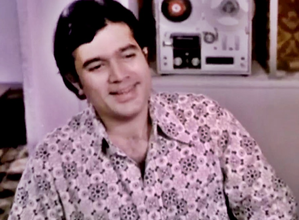Bollywood’s triple crisis: No bankable stars, no original scripts, overpriced market

With a loaded release calendar, starting with the VFX-heavy ‘Brahmastra’ and going up to Shah Rukh Khan’s much-anticipated ‘Jawan’ (January 25, 2023) and the Salman Khan-starrer ‘Tiger 3’ (April 21, 2023), riding on its broke back, Bollywood is facing the double whammy of its established stars all seeming to be well past their sell-by date and its scriptwriters appearing to be completely out of touch with the paradigm shift in consumer preferences.
The tanking of Aamir Khan’s ‘Laal Singh Chaddha’ and Akshay Kumar’s ‘Raksha Bandhan’ (his third in succession) — that too on a five-day holiday weekend with no competition from the South — has shown Bollywood for what it is worth.
For the failing stars, the writing on the wall can’t get any clearer — either reinvent yourself, like ‘tragedy king’ Dilip Kumar did with his comedic reinvention in the 1967 blockbuster ‘Ram Aur Shyam’ (which, significantly in the context of what is happening today, was the remake of the 1964 Telugu film ‘Ramudu Bheemudu’), or face the ignominy of fading away.
Audiences flock to see films with edgy scripts — they have done it, across recent decades, from Shah Rukh Khan’s ‘Darr’ and ‘Baazigar’ to Shahid Kapoor’s ‘Kabir Singh’, to the southern hit machines ‘K.G.F.: Chapter 2’, ‘RRR’ and ‘Vikram’. Or they just love getting transported to the world of fantasy, which is why the ‘Baahubali’ franchise has been the top of the top grossers in India, or, in the more recent past, Kichcha Sudeep’s 3D sci-fi thriller ‘Vikrant Rona’ worked so well.
It is for this reason alone that ‘Dr. Strange in the Multiverse of Madness’ has done better than most Hindi films this year. It also explains the successive successes of ‘Avengers: Infinity War’ (2018), ‘Avengers: Endgame’ (2019) and ‘Spider-Man: No Way Home’ (2022).
What, then, are the realities that Bollywood refuses to wake up to? Trade analyst Sumit Kadel offers the following reasons:
1. Bollywood is making movies for the urban elite multiplex market, which rules out the mass audience, whose budget for an outing to the cinema is between Rs 60 and Rs 150 — it is this audience that has given generations of Bollywood stars their blockbusters and superhits.
2. Even the multiplex audience “now wants to see films that justify, first, the commute and then the high ticket and food prices in theatres”. It is cheaper for them to consume entertainment from OTT platforms, where one password can be shared by the entire family — and the viewing experience does not require any commute. “The average monthly occupancy of multiplexes, unsurprisingly, has come down to 15-20 per cent,” Kadel commented. “That is why they are now forced to sell popcorn at exorbitant prices!”
3. The South still has a culture of single-screen cinemas with affordable ticket prices, so the films from there — and the stars — attract mass footfalls, which in turn leads to the creation of burgeoning fan clubs that keeps them in business. Add to this the support these films get from the South Indian diaspora across the world and you know why their makers are laughing all the way to the bank.
4. And most importantly, perhaps, Bollywood seems to be completely out of sync with how the proliferation of social media, from YouTube to TikTok, have revolutionised the entertainment preferences of Indian audiences. And this disruption of conventional entertainment preferences will be disrupted further by the penetration of 5G, which, following Prime Minister Narendra Modi’s Independence Day address, has become a national mission.
“Indian audiences are now not only exposed to the best of world cinema, thanks to the Internet, they also have snackable, flash and micro content in the forms of Instagram reels and YouTube vlogs,” Kadel pointed out. But, has Bollywood woken up to the ground moving below its feet? It does not seem so.






